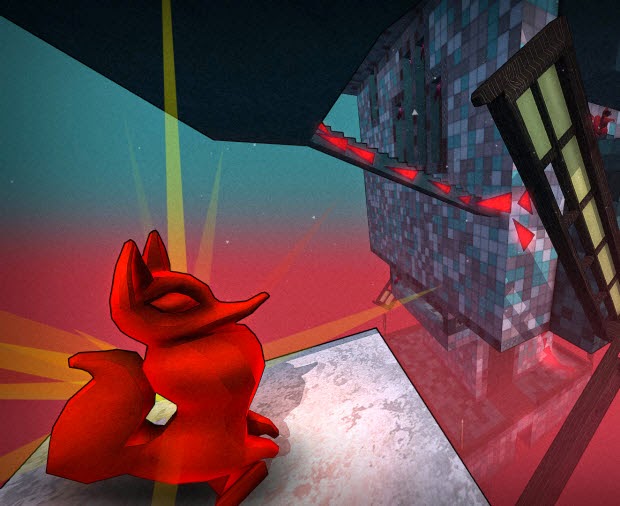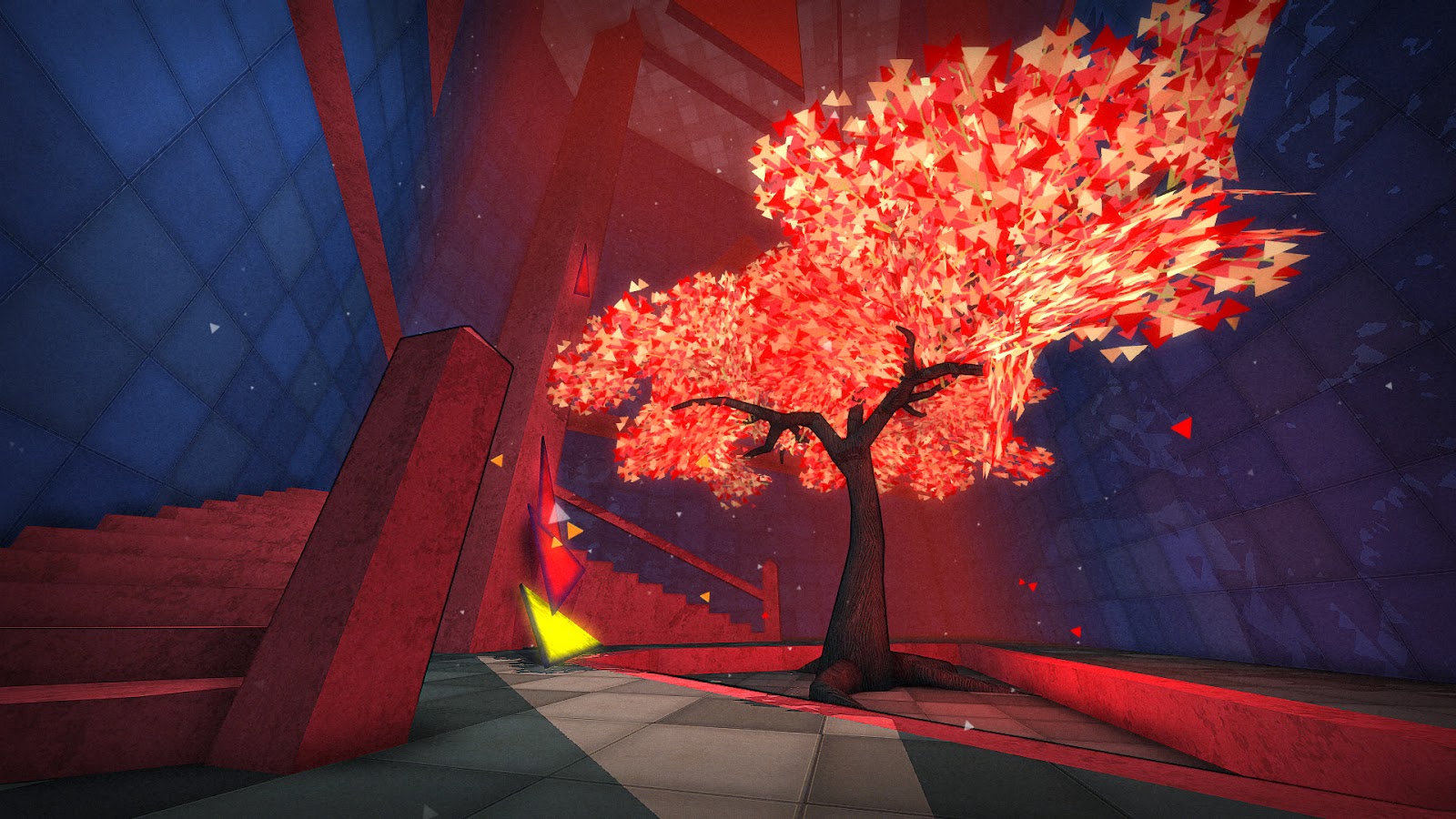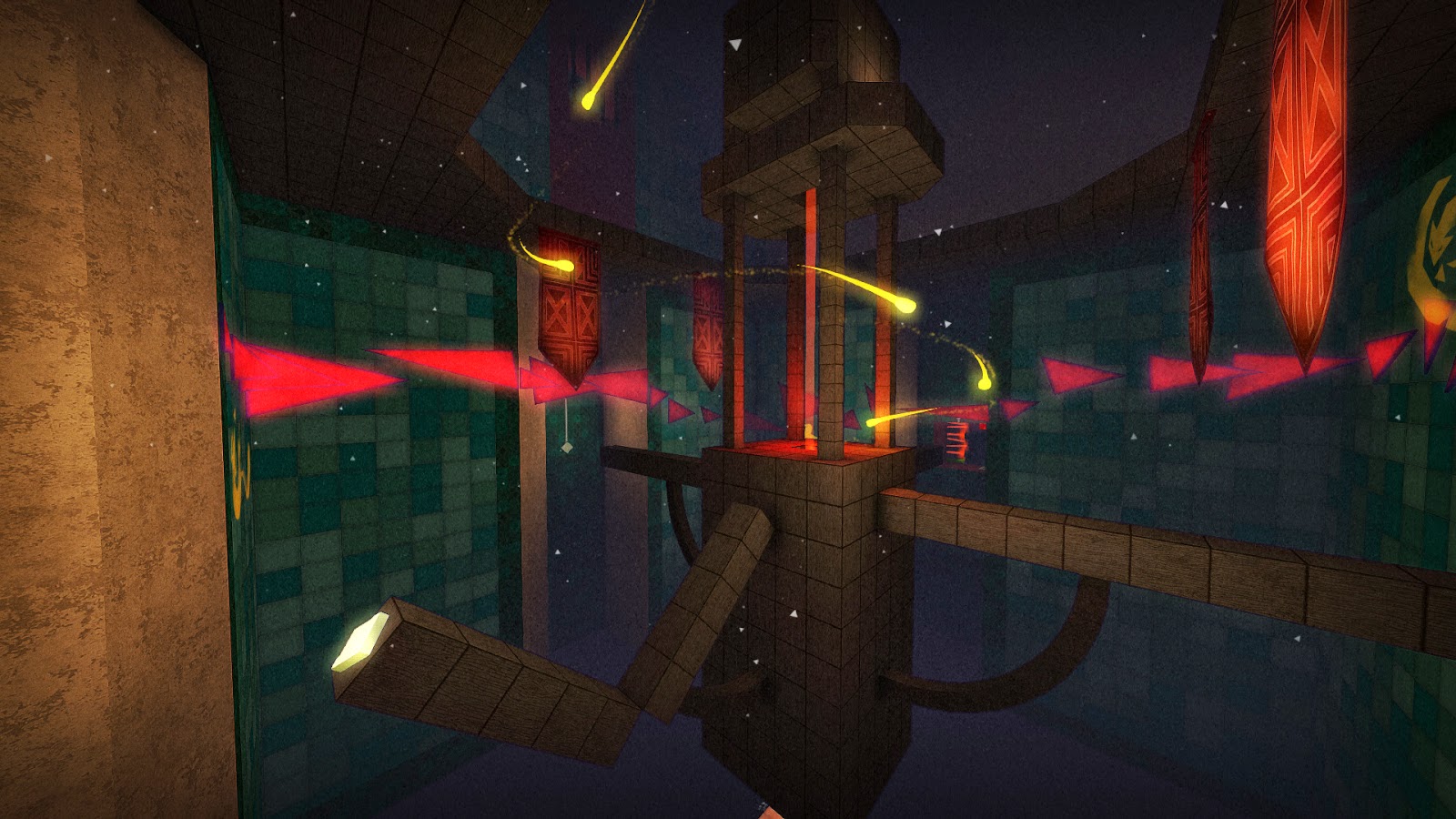 Review by Nick H.
Review by Nick H.
Most first-person games are about tension. It might be a horror game where the first person perspective is designed to connect the player closer to the fear (such as Alien: Isolation), or it might be using that perspective to most accurately emulate a sensation of speed, as in a game like Mirror’s Edge. The common element in these games is the intention to create intensity and tension. TRI, however, is attempting to do something a little differently by proving players with a puzzle filled world that is slow, methodical, and relaxing.
The visuals jumped out at me back when I previewed TRI several months ago. The atmosphere is incredibly immersive, with music that I can best describe as soothing or calming. The graphics are beautiful and slightly abstract at times, relying heavily on cel-shaded geometrical shapes that Jedediah accurately referred to as resplendent.
Levels can be explored at your leisure, and once you know how to navigate them, a level will usually take about ten minutes or so (maybe some of the longer ones a bit more, but not much). That being said, the first time you tackle one of the sixteen stages, prepare to spend half an hour to an hour lurking about looking for each of the keys and idols. This is a puzzle game, but until so many first-person games in the genre, there is no one exact way to proceed. That is the beauty of TRI, because it gives you a single, simple tool for success and then it is up to the player to figure out how to best utilise it.
The beginning of the game is introductory stuff with learning how the controls work. In truth sometimes the keyboard and mouse do make for a somewhat clumsy experience when trying to run, jump, climb and crouch quickly and accurately, but my personal preference is towards having a controller in my hand for quick, accurate movement. However, the controls do work and since you are not battling for your life or racing against a clock (though there is a sort of time trial built in so you can try to better your score on subsequent visits to the level), the controls work just fine. In truth the flexibility of a mouse is probably needed because of what comes after the initial stage.
You are then introduced to the TRI. The early levels keep things fairly simple and you’ll be tasked with creating three points, which will in turn create a triangle of varying sizes and incline. This you’ll use for lots of puzzles. See a large gap in front of you? Create a long, narrow triangle to form a bridge. Standing in front of a tall wall? Create a staircase out of smaller triangles to work your way up. Is there a yellow barrier blocking your path? You can remove these mystical triangles as well – both the ones you have created and ones already in existence. However, the level or slope of the points is important as creating too great of an incline makes that the triangle will not be something you can stand on.
The power of the TRI expands several levels in, enabling you to bend light and eve walk on ceilings. This flexibility is where TRI truly shines, because I found myself approaching puzzles multiple ways. Sometimes what seemed like an easy puzzle proved devilishly difficult, but I appreciated the game’s willingness to let me experiment through trial and error without being penalised. With no enemies, no death, there is no reason not to explore and try to find every last hidden idol along the way.
At sixteen levels, I would say TRI: Of Friendship and Madness is just about the perfect length, ringing in at just under a dozen hours. It does not overstay its welcome, and the story is unobtrusive and just interesting enough as your interactions with the old man met at the beginning serve as just enough of a carrot to dangle in front of the player until the rather fantastical story concludes. It is, of course, a fairly abstracted story about the search for religion, if not God, and leans heavily on a sense of Japanese spirituality – the fox, which is a major character within Tri’s world, is the source of great reverence for the Japanese. Those who are so inclined to analyse games as works of art will appreciate Tri’s subtleness and intelligence, and those who are simply coming for the puzzles will appreciate that they can largely ignore the themes as they play along.
The easy comparison is games like Portal or Q.U.B.E. due to the perspective and puzzling nature of the gameplay. Though TRI lacks the polish and presentation of the more popular Portal titles, its sheer accessibility and serenity mark it out as something genuinely different, and as such deserves to be noticed.
– Nick H.
US Editor









